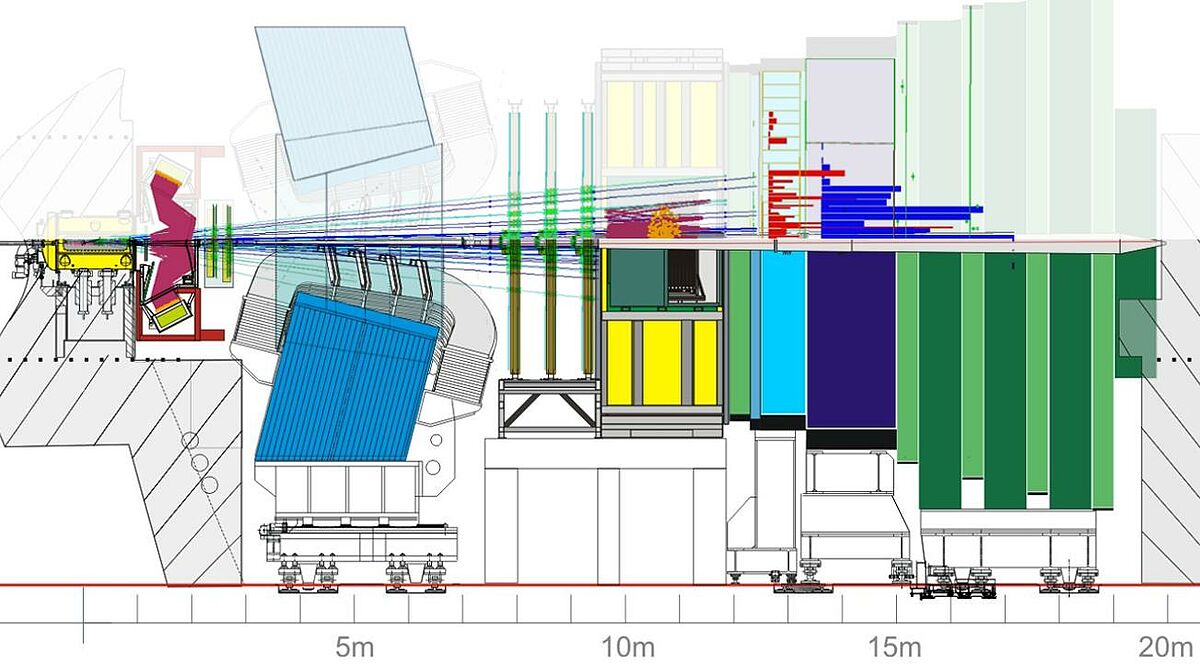Elementary Particle Physics 1999-2020
Group Leader / Gruppenleiter:
- 1999-2010 Prof. Dr. Schröder, Henning †
- 2010-2020 Priv.-Doz. Dr. Waldi, Roland
Group Members / Ehemalige Mitarbeiter
Publications / Veröffentlichungen
Research Projects / Forschungsprojekte:
A first project was HERA-B, a fixed target experiment at DESY. Rostock analyses focused on charmonium production in proton-nucleus interactions.
The next big electron positron collision experiment will be a joint international effort, the International Linear Collider (ILC). Our group participated in planning and simulation of the tracking chamber for the detector, especially in read-out electronics and monitoring, within the Helmholtz Alliance Physics at the Terascale in cooperation with DESY FLC.
The OPERA Detector has been built inside the Gran Sasso tunnel in Italy deep under the rock of the Apennin, and detected the appearance of tau-neutrinos from oscillating muon neutrinos generated at CERN 732 km away. Our group participated in the construction of electronics components.
The main goal of the BABAR experiment was the search for CP violation in the B meson system, using the BABAR Detector at the asymmetric electron positron storage ring PEP-II at SLAC, Stanford, California. The B mesons are produced in pairs from the decay of the Upsilon(4S) resonance, a bound state of a bottom quark and its anti-particle. Competing processes are the pair production of leptons, including the heaviest lepton tau, and of quarks. These offer hundreds of other interesting research topics in addition to the measurement of CP violating parameters. The experiment was taking data between May 1999 and April 2008. Our group was involved in the operation of the electromagnetic calorimeter and the related software optimization, and in data analysis.
In July 2011 we joined the LHCb collaboration. This project focuses on similar goals as BABAR, the probing of CP violation in the B meson sector. In addition to both light B mesons, also B mesons with a strange quark are produced at LHCb, and baryons with a b quark extend the area of these studies. The LHCb detector itself is located at the CERN laboratory at the border between Switzerland and France near Geneva. LHCb is one of the four large experiments at the Large Hadron Collider (LHC) particle accelerator, which collides beams of protons at energies up to 7 TeV. The dominant production mechanism of B mesons at LHCb is through gluon-gluon fusion. Since the produced pairs of b-quarks and anti-b-quarks are boosted in the forward (or backward) direction in the proton-proton center-of-mass system, the LHCb detector is designed as a single-arm, forward spectrometer measuring the decay products from the produced b-flavoured hadrons in one direction. With the large cross section for b-quarks, LHCb can study the b hadrons with a much larger statistical precision than BABAR. Our group was mainly involved in studies of decays involving baryons in the initial or final state.
There were also a few theory projects on dense quark matter.

